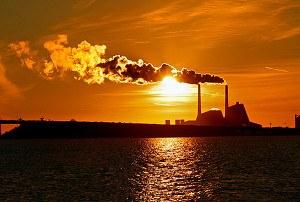
Politically contentious as ever, climate change is back in the headlines, as a brutal, deep and prolonged southward shift in the polar vortex has put much of the continental U.S. in a deep freeze. In stark contrast, people living in the Southern Hemisphere – in Australia, Argentina and Brazil, for example – are trying to cope with heat waves, the threat of drought and power outages in major cities. While many are scrambling with the immediacy of such problems, the U.S. Environmental Protection Agency (EPA) is moving forward with longer term, structural fixes to address climate change conceived by the Obama Administration. On Jan. 8, the EPA issued proposed new performance standards that would put an upper limit, or cap, on carbon and greenhouse gas (GHG) emissions from new, stationary power plants under Section 111 of the Clean Air Act.
Capping those nasty GHG emissions
Published in the Federal Register and open for public comment for 60 days, the proposed caps on GHG emissions would establish separate, "new standards of performance for new affected fossil fuel-fired electric utility steam generating units and stationary combustion turbines."
Another standard would apply to "fossil fuel-fired electric utility steam generating units and integrated gasification combined cycle units that burn coal, petroleum, coke and other fossil fuels that is based on partial implementation of carbon capture and storage as the best system of emission reduction."
It has taken the EPA more than three months to publish the new performance standards in the Federal Register, a delay that prompted speculation "that the EPA was having second thoughts about its justification for CCS (carbon capture and storage) as the 'best system of emission reduction' for coal plants," environmental attorneys in Ballard, Spahr's Energy and Project Finance and Environment and Natural Resources groups noted in a news alert.
“This speculation came amid allegations that the studies on which the EPA relied were not adequately peer-reviewed and that the agency improperly relied on projects that received government funding but would not otherwise be economically viable to show that CCS is 'adequately demonstrated.'"The published proposed rule conformed with the EPA’s original factual and legal rationale for selecting CCS technology as the basis for the emission standards.”
Going it alone to deal with climate change
With efforts to forge bi-partisan consensus and action frustrated by opposition in Congress, the EPA's new GHG emissions performance standards are the latest in a series of actions taken by President Obama and his administration to address climate change in a more integrated, holistic manner; one that seeks to capitalize on opportunities as well as address the risks, threats and challenges rapid climate change – and an associated increase in the frequency and intensity of extreme weather events – presents society in the U.S. and globally.
The new GHG performance standards for new, stationary power generation sources have come about as a result of a June 25, 2013 Presidential Memorandum in which President Obama directed the EPA to propose precedent-setting limits on carbon and GHG emissions. The memorandum coincided with the launch of his National Climate Change Action Plan.
Commenting on the initiative, EPA Administrator Gina McCarthy said,“EPA is announcing the first action that we are taking under the president’s climate action plan to address the most significant public health challenge of our time, which is climate change. We are announcing proposed regulations that will limit carbon pollution from this country’s single largest individual sources — power plants.”
The EPA’s proposed new standard would limit carbon emissions from new, large natural gas-fired power plants to 1,000 pounds of CO2 per megawatt-hour (MWh) and cap emissions from smaller natural gas-fired plants to 1,100 pounds of CO2 per MWh. Coal industry executives have risen up in arms over the new proposals, asserting that President Obama is trying to drive them out of business.
Under the proposed new EPA rule, coal-fired power plants would have to limit their carbon emissions to the same 1,000 pounds per MWh as natural gas-fired plants, though the EPA has built in some greater operational flexibility for them by allowing them to meet a "somewhat tighter limit if they choose to average emissions over multiple years."
A final rule from the EPA is expected by the end of of 2014. With this process completed, the EPA will move forward and propose new GHG emissions rules for existing power generation sources, Ballard, Spahr's attorneys point out:
"While this proposal does not address greenhouse gas emissions from existing power plants, once the EPA adopts standards for new sources, it will be required to regulate greenhouse gas emissions from existing power plants as well. President Obama has directed the EPA to propose a rule for existing plants by June 1, 2014, and to sign a final rule by June 1, 2015."
Image credit: Flickr/Martini DK

An experienced, independent journalist, editor and researcher, Andrew has crisscrossed the globe while reporting on sustainability, corporate social responsibility, social and environmental entrepreneurship, renewable energy, energy efficiency and clean technology. He studied geology at CU, Boulder, has an MBA in finance from Pace University, and completed a certificate program in international governance for biodiversity at UN University in Japan.














